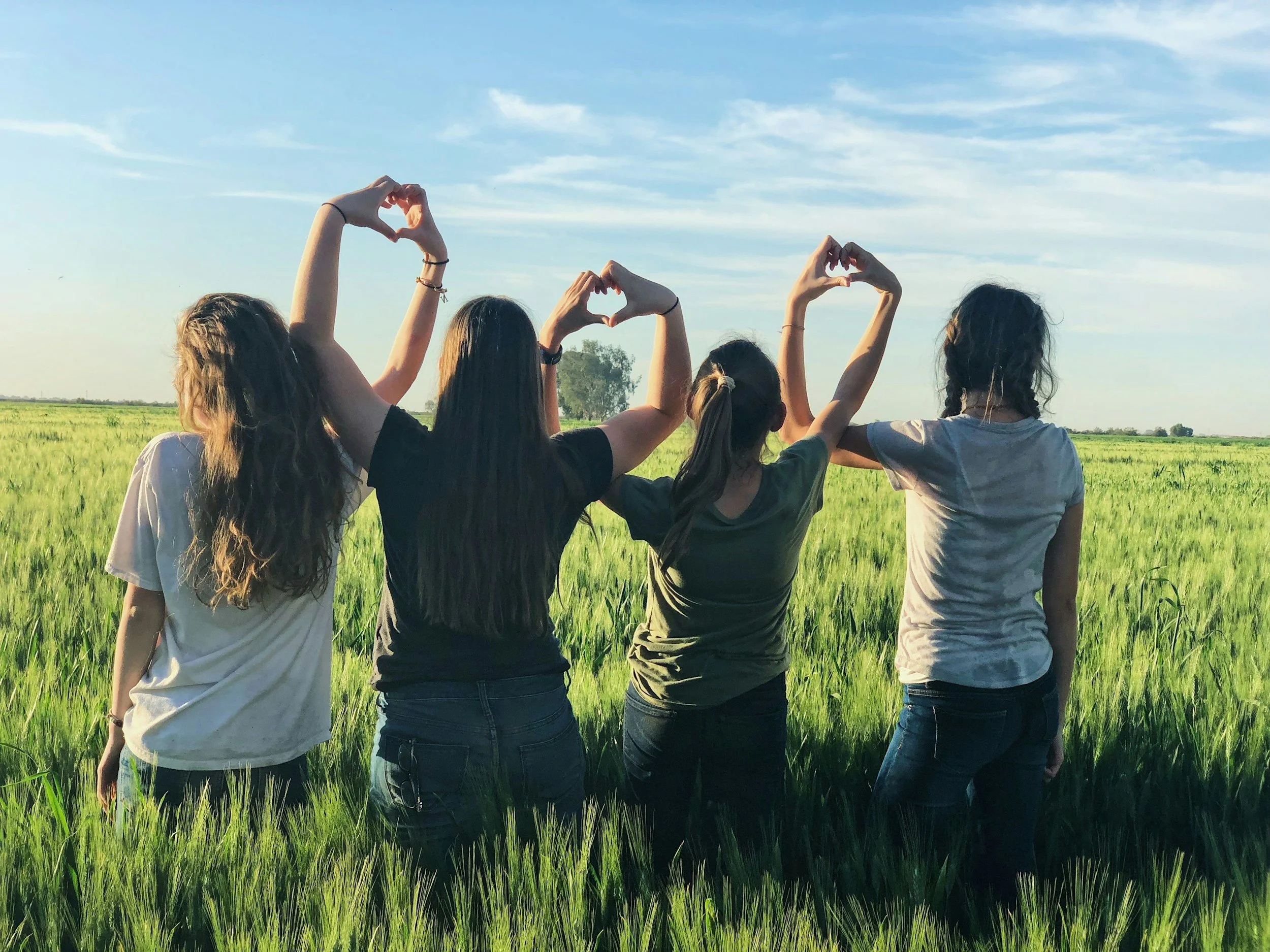Greetings from the community foundation!
In this season of giving, we are thankful for the opportunity to work with such talented professionals at nonprofit organizations across our entire region. Thank you! We’ve enjoyed collaborating with so many of you throughout the year, and we look forward to many more conversations in the months and years ahead.
We’re happy to share trends and tools to help you navigate the year-end flurry of activity.
—As you distribute your last-minute fundraising messages for 2025, we encourage you to keep messages simple and focused, especially because many of your donors may be facing 2026 tax changes. Ideas include promoting appreciated-stock gifts, emphasizing QCDs for donors who are 70 ½ and older, and reminding your supporters not to wait until late December because processing some types of gifts can take time.
—The community foundation is happy to provide ready-to-use language to help you craft year-end appeals that highlight both immediate needs and your organization’s objectives for long-term stability. Use these messages to invite donors into multiple giving pathways, show concrete impact, and offer clear, tax-smart calls to action before December 31.
—If you are looking ahead to 2026 and wondering what might be in store for corporate giving, you are not alone! It’s a big question mark for many charities and, simultaneously, for many companies. That’s because new tax laws taking effect next year could discourage some forms of corporate giving. In this environment, consider starting now to seek out purpose-driven companies that may be more likely to continue their support in creative ways even under the new laws.
We wish you all the best for the holiday season! Thank you for your partnership as we work toward increasing charitable giving, connect donors and nonprofits, and strive to make a positive difference in the quality of life in our region.
–Your community foundation
THIS MONTH’S
FEATURED ARTICLES
Tis the season: Three tips for year-end giving
As your donors gear up for the giving season, it’s more important than ever to stay in front of them with clear, simple messages about how they can support both your annual campaigns and your long-term reserves—especially with major charitable deduction changes taking effect in 2026.
Here are three key reminders that remain surprisingly overlooked, even among longtime donors.
Promote gifts of appreciated stock
Donating long-term appreciated securities continues to be one of the most tax-efficient ways for donors to support your organization because it eliminates capital gains tax while allowing a deduction at fair market value. Donors often default to writing a check, missing out on significant tax savings—and this is important particularly after strong market performance in 2025 in many stock positions. As always, the community foundation can help facilitate gifts of appreciated stock to your endowment or operating fund at the community foundation to ensure donors achieve maximum benefit before next year’s less favorable rules take effect for donors who itemize deductions.
Keep emphasizing Qualified Charitable Distributions
Even though QCDs have been around for years, many eligible donors remain unaware of them or confused about how they work. Your year-end outreach should include a clear reminder to donors age 70½ and older that they can make up to $108,000 in QCDs for 2025. With the new AGI floor and deduction cap taking effect in 2026, QCDs will become even more valuable because they bypass itemized deduction limits altogether. Encourage donors to consult their tax advisors.
Encourage donors to watch the calendar
Certain gifts—including QCDs and transfers of appreciated stock—require multiple processing steps and cannot be executed at the last minute. While of course your team moves quickly, and you also can lean on the community foundation for help, it’s best to allow several business days to ensure everything is completed properly. Remind donors that checks must be postmarked or hand-delivered by December 31, and marketable securities must fully transfer by year-end, whether through the community foundation or directly to your organization.
We look forward to working closely with you and your colleagues to help your donors finish 2025 strong and position themselves wisely ahead of the 2026 tax law changes.
Strengthening your year-end appeal: Cut-and-paste messages
As the last days of 2025 approach, you’re likely preparing to send a final appeal to your donors. This is one of the most important fundraising moments of the year—and an ideal opportunity to remind supporters that their generosity can sustain both today’s work and your organization’s long-term stability, including through your endowment or reserve fund at the community foundation.
With a few intentional adjustments, your year-end message can inspire gifts for immediate needs and encourage donors to invest in your organization’s future. Here are three strategies and sample language you can cut, paste, edit, and use right away.
Invite donors into the full picture of giving
Year-end letters work best when they reflect the many ways supporters can be part of your mission. Consider language such as:
Our community thrives because of caring supporters like you who choose to stand behind our mission in so many meaningful ways. Some of you give every December to support our operating budget. Others have strengthened our future by making gifts to our long-term reserves. And many of you have made thoughtful legacy plans through a bequest or retirement account beneficiary designation. Whatever your path, your commitment makes our work possible—and we are truly grateful.
Show donors how their gifts create real impact
Help donors understand what their support has accomplished this year—especially how long-term giving plays an important role. For example:
Because of the generosity of donors, our organization was able to add two case managers this year, expanding services to nearly 50 additional children. What’s more, endowment distributions alone allowed us to equip our team with updated technology, saving time on administrative tasks and giving us more capacity for direct, personal support. These are just a few examples of how your giving strengthens our work today and long into the future.
Provide clear, simple ways to give before December 31
A strong call to action makes year-end giving easier and more likely. Offer straightforward options and highlight tax-smart strategies:
We welcome your year-end gift in whatever way works best for you. You can give online at [URL], or mail a check to the address below. If you’re considering a gift of appreciated securities—an especially tax-efficient option this time of year—please reach out. Through our partnership with the community foundation, we can help you make a seamless gift to support our annual operations, our reserves, our endowment fund, or all of the above.
As always, please reach out to the community foundation. We are happy to serve as a sounding board as you close the year strong and head into 2026!
Engaging purpose-driven companies
A new year is right around the corner! As you look ahead to 2026, you’re facing the possibility that it may be more challenging to secure corporate donations than in the past. Here’s why:
–The One Big Beautiful Bill Act (OBBBA) introduced a new 1% taxable income “floor” that corporations must exceed before any charitable contributions become deductible. This means that routine or modest corporate gifts will no longer generate a tax benefit unless they surpass that threshold, making philanthropy a less financially incentivized activity for many companies.
–At the same time, the existing 10% cap on corporate charitable deductions remains in place, so companies will need to navigate both limitations together, complicating their giving strategies.
–As a result, some companies may delay or reduce their charitable support, prioritize fewer but larger gifts, or shift their giving toward sponsorships classified as marketing expenses rather than charitable donations. Understanding this changing landscape will be essential for you and other nonprofits as you plan donor engagement and corporate outreach in the year ahead.
In light of upcoming changes, it’s more important than ever for your team and board to seek out companies that integrate a well-defined social purpose into their business operations and strategy. These companies are more likely to view their philanthropic partnerships as strategic investments rather than simply transactional gifts. Here’s how you can make this work for you:
–As you meet with corporate leaders, be sure to mention research signaling that some purpose-driven companies post up to 25% higher revenue and up to 22% higher pre-tax profit than those that don’t focus on purpose.
–Approach purpose-driven companies by positioning your conversation not simply as a funding request but as a collaborative opportunity: alignment between the company’s business purpose and your community impact.
–Discuss specific opportunities for a company’s support to help boost the company’s brand and public image; enhance employee engagement, recruiting efforts, and retention; and most importantly, achieve meaningful results in our community where the company’s employees live and work.
As always, lean on the team at the community foundation as a sounding board! We offer a wide range of charitable giving tools for businesses of all shapes and sizes, and we are happy to help structure gifts to your organization where a business would like to establish a corporate fund, set up funds for employees, and make it possible for executives to donate a wide variety of assets.
We look forward to hearing from you!
This newsletter is provided for informational purposes only. It is not intended as legal, accounting, or financial planning advice.





















